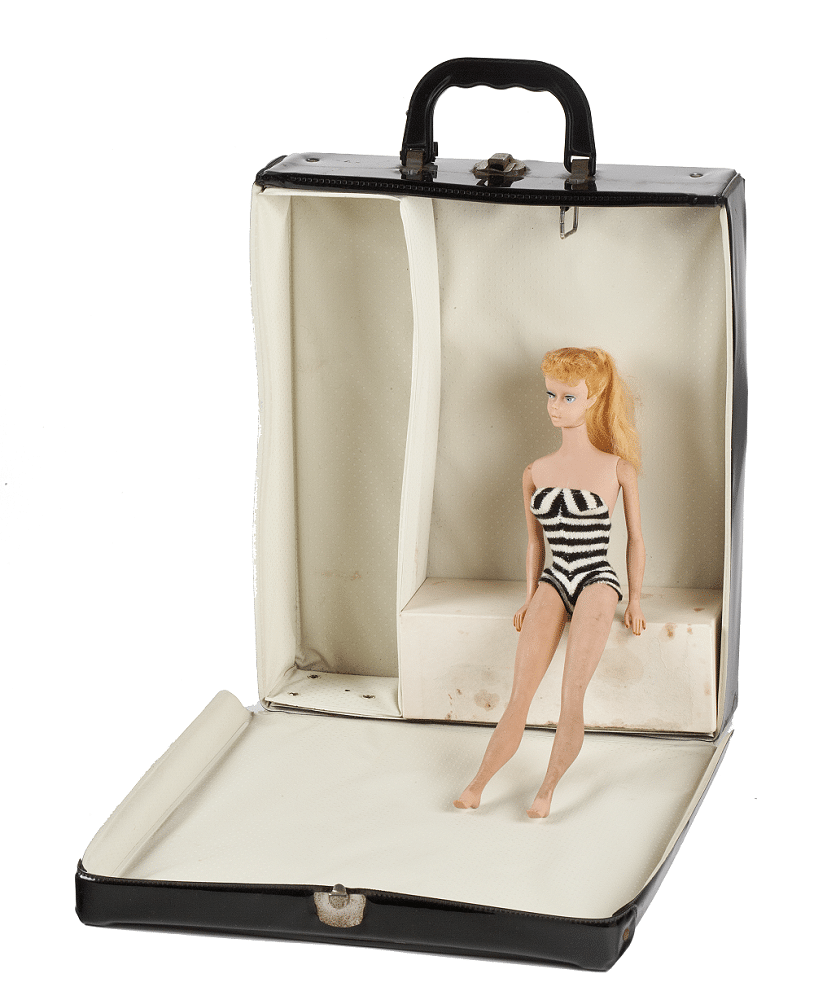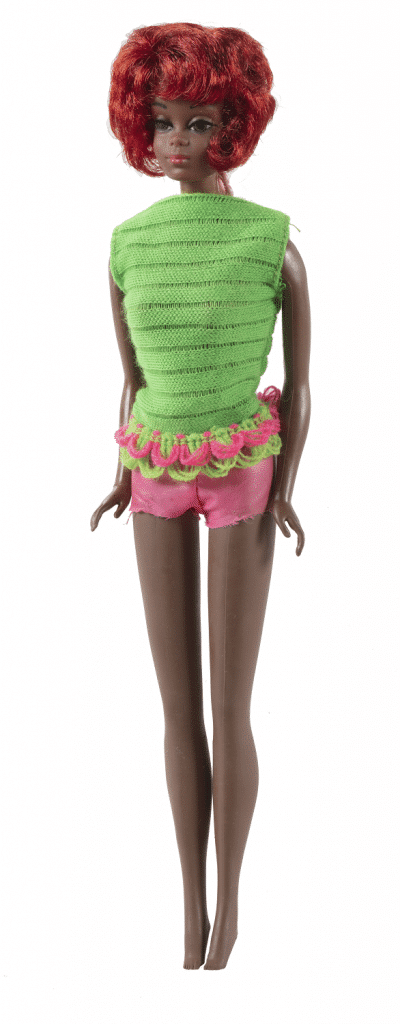Home / Growth and Turmoil, 1948-1977 / Cold War Beginnings / Barbie and Christie
Resource
Barbie, Christie, and the Teenage Ideal
Two dolls created by the Mattel company in 1959 and 1969.
- About
-
Curriculum
- Introduction
-
Units
- 1492–1734Early Encounters
- 1692-1783Settler Colonialism and the Revolution
- 1783-1828Building a New Nation
- 1828-1869Expansions and Inequalities
- 1832-1877A Nation Divided
- 1866-1898Industry and Empire
- 1889-1920Modernizing America
- 1920–1948Confidence and Crises
- 1948-1977Growth and Turmoil
- 1977-2001End of the Twentieth Century
- Discover
-
Search
Background
Before 1959, dolls looked like babies or young children. Girls were expected to learn about childcare when they played with these toys. But Barbie changed that forever. Barbie was a teenager who wore a bathing suit, makeup, and high heels. She had a career in fashion modeling. When girls played with her, they were free to imagine a grown-up life not necessarily tied to motherhood.
Barbie the toy and Barbie the character were direct products of post-war consumerism. The Mattel toy company sold many accessories for Barbie, including outfits, telephones, records, and magazines. In 1962, Barbie’s suburban “Dreamhouse” appeared in stores, promoting materialistic ideals. A series of Barbie’s companions were also introduced, including boyfriend Ken, best friend Midge, and little sister Skipper. A few years later, Mattel introduced Barbie’s first Black friends: Francie and Christie.
Barbie’s physical appearance informed her popularity and disfavor. Many girls interpreted her pale skin, blonde hair, blue eyes, and hourglass figure as an ideal to which they should aspire. They wanted to be just like Barbie: beautiful, popular, adored by her boyfriend, and financially independent. But other girls—particularly girls of color—knew they could never look or be like Barbie. To them, she was a reminder that they were different and did not fit the mainstream image of a typical American girl. The introduction of Francie and Christie helped a bit. But they were not Barbie.
Even playing with Barbie was an unreachable goal for many girls who could not afford to buy a doll, let alone her lavish wardrobe.
About the Image
The original Barbie appeared in toy stores in 1959. She wore a black-and-white bathing suit with her blond hair in a ponytail. Additional outfits and the carrying case in this picture were sold separately.
In 1967, Mattel introduced Francie, a darker-skinned version of a white doll with the same name. In 1968, Mattel created Christie. Christie had the same body as Barbie so that their clothes were interchangeable. But her face was a new design intended to highlight the facial features of a Black woman. Many consider Christie to be the first “Black Barbie.” Christie was part of a series of talking dolls. By pulling a string on her back, the doll said things like, “Hi! I’m Christie!” and “Let’s go shopping with Barbie.” Christie’s hair was black. (The Christie doll pictured has red hair because it has faded over time.)
Francie and Christie were advertised as Barbie’s friends in an attempt to create a racially diverse Barbie world. But whether children actually played with the dolls in this way is less clear. Most often, white girls bought Barbie, and Black girls bought Christie. In 1980, Mattel started offering three versions of Barbie: white Barbie, Black Barbie, and Latina Barbie.
Vocabulary
- consumerism: A society’s emphasis on purchasing new goods.
- disfavor: Disapproval or dislike.
- ideal: A level of perfection that is often unrealistic or unattainable.
- mainstream: The ideas or opinions that people in power see as normal or acceptable.
- materialistic: Highly values money and material possessions.
- post-war: Referring to the period after World War II.
Discussion Questions
- What do you notice about these two objects?
- Why do you think girls liked playing with Barbie so much? What made her different from other dolls? Why is this important?
- To what extent did Barbie and Christie—the toys and the characters—embody American consumerism?
- How do you think Barbie and Christie shaped girls’ views of what is meant to be a teenager and a young woman?
- What is the significance of Barbie’s physical appearance? Why does it matter that she is white?
- What is the significance of Christie’s physical appearance? Why does it matter that she is Black?
- Mattel chose not to create a Black doll named Barbie until 1980. Instead, they had Christie. Why do you think they did this? What does this say about Barbie and what she represents?
Suggested Activities
- Toys can tell us a lot about the values of a society and its assumptions about roles and inclusion. After analyzing Barbie and Christie, invite students to explore the toys they have at home. How can they analyze these objects like a historian? What do these toys say about society and what children should grow up to be and do?
- Barbie, Christie, and other toys were closely connected to America’s growing consumer culture in the 1950s and 1960s. Analyze this resource alongside the film of the shopping center and photographs of kitchen appliances to deepen the conversation.
- Learn more about the critical role of Black dolls in the lives of Black girls by comparing Christie’s story to that of Black dolls from the 19th century.
- Barbie has always been a toy with controversy. Her physical appearance has changed dramatically over the years. Invite students to research online to learn more about the ongoing debate about Barbie and ideals of American womanhood.
- Barbie is part of a much larger history of American girlhood. Learn more about this and place Barbie in a bigger context by exploring the Smithsonian’s digital Girlhood exhibition.
- In 1970, protesters at the Women’s March for Equality chanted “I am not a Barbie doll!” Connect this resource to photographs of the march and invite students to think about this chant, what it meant, and why it was a literal rallying cry for feminists.
Themes
AMERICAN CULTURE








